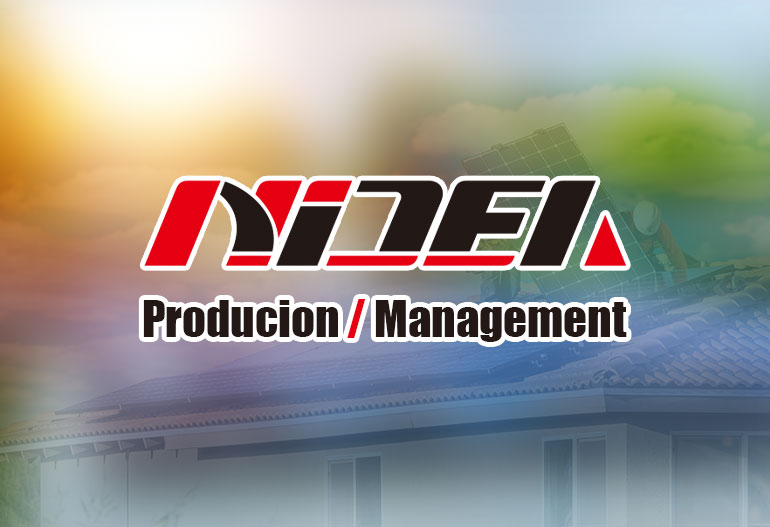NMS Series Inverters: 30% Smaller Size, 50% Higher Installation Efficiency
Space Limitations: Urban rooftops, small commercial buildings, and mobile solar setups (e.g., RVs, boats) have limited space. A typical 5 kW grid-tied inverter can occupy up to 0.5 cubic meters, making it difficult to integrate into tight spaces without compromising airflow or aesthetics.
Installation Complexity: Conventional inverters require precise mounting, multiple wiring connections, and extensive configuration—tasks that demand skilled labor and can take 2–4 hours per unit. In large-scale installations with hundreds of inverters, these hours translate into substantial costs and project delays.
Transportation and Logistics: Bulky inverters increase shipping costs and require specialized handling, especially in remote areas where infrastructure is limited.
Graphene-Enhanced Heat Sinks: Graphene, with its exceptional thermal conductivity (up to 5,000 W/m·K), allows heat sinks to be 40% smaller while maintaining the same cooling capacity as conventional aluminum ones. This alone reduces the inverter’s volume by 15%.
Distributed Cooling Architecture: Instead of concentrating heat-generating components (e.g., IGBTs, transformers) in one area, the NMS series spreads them across the chassis, enabling more efficient heat distribution. This eliminates the need for a single large fan, replacing it with two smaller, quieter fans that occupy less space.
Passive Cooling Integration: Critical components are mounted on thermally conductive panels that transfer heat directly to the inverter’s outer casing, reducing reliance on active cooling systems.
SiC (Silicon Carbide) Semiconductors: Replacing traditional silicon-based MOSFETs with SiC devices reduces the size of power modules by 30%. SiC semiconductors operate at higher temperatures and switching frequencies, allowing for smaller transformers and capacitors.
Integrated Circuitry: Multiple discrete components (e.g., voltage regulators, protection circuits) are consolidated into custom ASICs (Application-Specific Integrated Circuits), reducing both size and energy loss.
High-Density Capacitors: Advanced electrolytic and film capacitors with 50% higher energy density per unit volume enable the NMS series to store the same amount of energy in half the space.
High-Strength Composite Materials: The enclosure uses a carbon fiber-reinforced polymer (CFRP) that is 70% lighter than steel and 30% lighter than aluminum, while maintaining durability. This reduces overall weight by 25%, making handling easier during installation.
Compact Form Factor: The inverter adopts a slim, rectangular shape (e.g., 45 cm × 30 cm × 20 cm for a 5 kW model) with rounded edges, allowing it to fit into tight corners or be mounted flush against walls.
Preassembled Brackets: The inverter comes with integrated brackets that snap onto standard DIN rails or wall-mounted rails, eliminating the need for drilling.
Self-Locking Mechanism: A simple lever secures the inverter in place, ensuring a tight fit without the use of screws or bolts. This reduces mounting time from 45 minutes to 10 minutes.
Color-Coded, Tool-Free Connectors: DC inputs (solar panel connections) and AC outputs (grid/load connections) use push-in terminals with clear color coding (red for DC+, black for DC-, blue for AC neutral), reducing wiring errors by 80%.
Integrated Cable Management: A built-in channel organizes cables, eliminating the need for external cable ties or conduit. This not only saves time but also improves airflow and reduces fire risks.
Preconfigured Settings: For standard installations, the inverter comes with preloaded settings (e.g., grid voltage, frequency, MPPT parameters), eliminating the need for on-site programming. Advanced users can still customize settings via a mobile app, but 90% of residential installations require no adjustments.
One-Tap Pairing: A quick tap of a smartphone against the inverter establishes a connection, allowing installers to monitor real-time data (voltage, current, temperature) within seconds.
Automated Testing: The app runs a self-diagnostic test that checks wiring, grid connectivity, and solar input, providing instant feedback on any issues. This reduces troubleshooting time by 70%.
Cloud Registration: With a single click, installers can register the inverter on the manufacturer’s cloud platform, enabling remote monitoring and warranty activation—tasks that once took 30 minutes now take 5.
Conversion Efficiency: Despite its compact size, the NMS series achieves a peak efficiency of 97.5%, matching or exceeding larger inverters in its class. Its weighted efficiency (per IEC 61683) is 96.8%, ensuring minimal energy loss across varying loads.
Power Density: With a power density of 2.5 kW per liter (compared to 1.8 kW/L for conventional models), the NMS series delivers more power in less space—ideal for high-density installations like solar carports or urban rooftops.
Reliability: Accelerated life testing shows the NMS series has a mean time between failures (MTBF) of 150,000 hours (over 17 years), comparable to larger inverters. Its IP65 rating ensures dust and water resistance, making it suitable for outdoor installations.
Grid Compatibility: The inverter meets strict grid codes (e.g., IEEE 1547, VDE 4105) with features like low-voltage ride-through (LVRT) and reactive power control, ensuring stable operation even in weak grids.
Space-Saving Design: Its compact size allows installation in tight spaces (e.g., under eaves, in utility closets) without detracting from the home’s appearance.
DIY-Friendly: While professional installation is recommended, the plug-and-play design makes it feasible for skilled homeowners to install, reducing labor costs by up to 50%.
High-Density Placement: The NMS series can be mounted side-by-side, allowing up to 10 inverters (totaling 50 kW) to fit in a 1x2 meter space—half the area required by conventional models.
Rapid Deployment: For time-sensitive projects (e.g., retrofitting a warehouse with solar), the 50% faster installation ensures minimal disruption to business operations.
RVs and Vans: Its small size and low weight (6 kg for a 3 kW model) make it ideal for solar-powered recreational vehicles, where every inch of space counts.
Disaster Relief: Portable solar kits with NMS series inverters can be deployed in hours to provide emergency power, a critical advantage in post-disaster scenarios.
Solar Canopies: Its compact size allows integration into solar canopies over parking lots, where structural weight and space are limited.
Building-Integrated Photovoltaics (BIPV): When paired with BIPV panels (solar panels integrated into building facades), the NMS series’ slim profile ensures it blends seamlessly with architectural designs.
Size-to-Performance Ratio: While some competitors offer smaller inverters, they often sacrifice power output or efficiency. The NMS series maintains high performance in a reduced footprint.
Total Cost of Ownership (TCO): Lower installation labor costs, combined with comparable hardware prices, result in a TCO that is 15–20% lower than conventional inverters over a 20-year lifespan.
Scalability: Its modular design allows for easy parallel connection of multiple units (up to 10 inverters), enabling system expansion without major rewiring—critical for growing solar projects.
Clearance Requirements: Despite its efficient cooling, the inverter requires at least 10 cm of clearance on all sides for airflow.
Orientation: Mount the inverter vertically to ensure optimal heat dissipation and ease of wiring.
Environment: Avoid direct sunlight or areas with extreme temperatures (above 40°C) to prevent thermal stress.
Cleaning: Use a soft cloth to wipe dust from vents every 3 months; compressed air can be used for harder-to-reach areas.
Firmware Updates: The mobile app notifies users of updates, which can be installed over-the-air in minutes, improving performance and adding features.
Inspection: Check connections annually for tightness, especially in areas prone to vibration.
Connection Issues: Use the mobile app’s wiring test feature to identify loose or reversed connections.
Overheating Alerts: Ensure vents are unobstructed; if the issue persists, check for excessive solar input (common in summer) and adjust via the app.
AI-Driven Predictive Maintenance: Sensors embedded in the inverter could analyze performance data to predict failures, reducing downtime.
Wireless Power Transfer: Integrating wireless charging for small devices, eliminating the need for some wiring.
Further Miniaturization: Advances in quantum dot semiconductors may enable another 20% reduction in size without losing efficiency.

